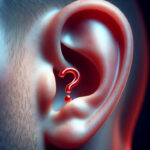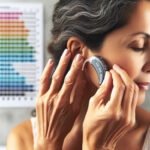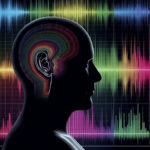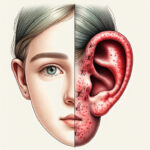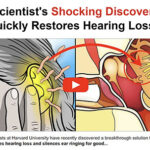This 30 Second Technique is Shockingly Effective
Age Related Hearing Loss Audiogram: Identifying Patterns and Planning Treatment
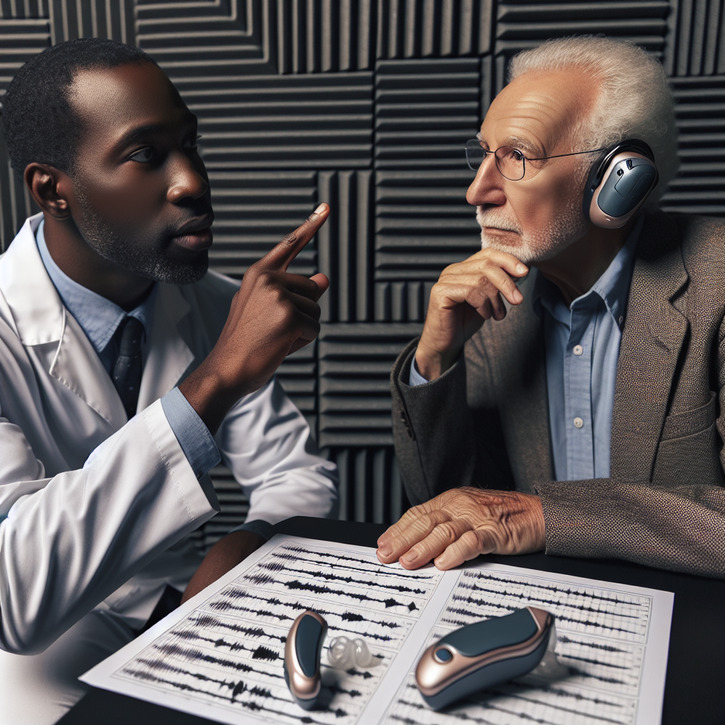
Understanding Age-Related Hearing Loss (Presbycusis)
Defining Age-Related Hearing Loss begins with recognizing it as a natural part of the aging process, known as Presbycusis. This gradual loss of hearing affects individuals differently, often starting around the age of 60. It is characterized by a decline in the ability to perceive or interpret sounds, particularly in noisy environments. Unlike other forms of hearing impairment, age-related hearing loss typically occurs in both ears and progresses slowly, making early symptoms less noticeable to those affected.
How Presbycusis Affects Hearing is by primarily impacting the sensitivity to high-frequency sounds. Conversations can become muddled as consonants, which are high-pitched, become harder to discern. This difficulty is exacerbated in background noise, where the ability to focus on a single speaker is impaired. Age-related changes in the inner ear structures, along with alterations in nerve pathways leading to the brain, contribute to the hearing challenges experienced.
Common Symptoms of Age-Related Hearing Loss include difficulty understanding speech, especially against background noise, asking others to repeat themselves, needing higher volumes on televisions and radios, and a perception that others are mumbling. These symptoms can lead to social withdrawal and emotional distress, underlining the importance of recognizing and addressing age-related hearing loss promptly.
Introduction to the Audiogram
What is an Audiogram? It is a graphical representation of an individual's hearing ability. During an audiometric test, a range of sounds of varying frequencies and intensities are played to the subject through headphones. Their ability to hear each sound is then charted on the audiogram, providing a visual depiction of their hearing thresholds across different frequencies, which is essential for diagnosing the type and degree of hearing loss.
The Role of Audiograms in Diagnosing Hearing Loss is crucial as they offer a detailed illustration of an individual's hearing capabilities. Audiologists rely on audiograms to detect hearing impairments, understand their severity, and determine the most appropriate intervention strategies. By comparing audiograms over time, professionals can also track the progression of hearing loss.
Interpreting Audiogram Results involves understanding the various markers and lines on the chart. Frequencies are displayed on the horizontal axis, from low to high, while intensity levels are shown on the vertical axis. An audiologist can identify specific hearing loss patterns by examining the shape and slope of the line that connects the marks representing the softest sounds a person can hear at each frequency.
Patterns of Age-Related Hearing Loss on an Audiogram
High-Frequency Hearing Loss Patterns are typical in age-related hearing loss audiograms, where the ability to hear higher frequencies diminishes first. On the audiogram, this manifests as a descending line from left to right, indicating that louder sounds are required for the person to hear higher-pitched noises. This pattern is a primary indicator of Presbycusis, as high-frequency sounds are often the first to be affected by aging auditory structures.
The Sloping Audiogram Configuration is a hallmark of age-related hearing loss. The audiogram demonstrates normal or near-normal hearing in the low frequencies, with a gradual decline to significant hearing loss in the higher frequencies. This slope is significant for audiologists, as it helps differentiate age-related hearing loss from other types of hearing impairments that might show a different pattern on the audiogram.
Notching and Its Significance can sometimes be observed on an audiogram, indicating a specific frequency where hearing loss is more pronounced. Often seen at the 4 kHz frequency, this notch can be attributed to noise-induced hearing loss, which may coexist with age-related hearing loss. Distinguishing this pattern is important for understanding the patient's hearing history and potential exposure to damaging noise levels.
Audiometric Thresholds and Age-Related Hearing Loss
Identifying Threshold Shifts in Older Adults is a key aspect of interpreting age related hearing loss audiograms. An audiometric threshold is the softest sound that a person can hear at a given frequency. As age advances, these thresholds typically increase, indicating that louder sounds are needed for detection. Monitoring these shifts is essential for tailoring hearing interventions that effectively compensate for the individual's specific hearing deficits.
The Relationship Between Age and Audiometric Thresholds is evident, as thresholds typically worsen with increasing age. This deterioration is not uniform across all frequencies, with the higher pitches usually affected earlier and more severely. Understanding this relationship aids audiologists in predicting the progression of age-related hearing loss and in educating patients about their condition.
Bilateral Symmetry in Age-Related Hearing Loss is often seen, with both ears typically exhibiting similar degrees of hearing loss at corresponding frequencies. This symmetry helps distinguish age-related hearing loss from other forms, such as unilateral hearing loss due to ear infections or trauma, which might affect one ear more than the other.
Planning Treatment for Age-Related Hearing Loss
Hearing Aids and Amplification Devices are the most common treatment for age-related hearing loss. These devices are designed to amplify sounds, making them easier to hear, and can be fine-tuned to match the specific hearing loss pattern of the individual. Modern hearing aids are discreet and come with a range of features to improve the user's listening experience, such as directional microphones and noise reduction.
Assistive Listening Devices and Technology have evolved to provide additional support for those with hearing loss. From specialized telephones to alerting devices that convert sounds into visual or vibrating signals, these technologies can significantly enhance the daily lives of those with hearing challenges. Additionally, smartphone apps and wireless accessories can link hearing aids with various multimedia devices for improved communication.
Communication Strategies and Aural Rehabilitation are vital components of treating age-related hearing loss. Aural rehabilitation programs teach individuals how to optimize their communication skills, manage listening environments, and use hearing aids effectively. Meanwhile, friends and family can adopt specific communication strategies, such as facing the listener and speaking clearly, to facilitate better understanding.
Impact of Age-Related Hearing Loss on Quality of Life
Social and Emotional Consequences of age-related hearing loss can be significant, leading to feelings of isolation, depression, and frustration. Difficulties in communication may result in withdrawal from social interactions and activities that were once enjoyable. Addressing the emotional and psychological impacts of hearing loss is as important as the physical treatment, and support groups or counseling may be beneficial for some individuals.
The Importance of Early Detection and Treatment cannot be overstated. Early intervention can slow the progression of hearing loss, improve the quality of life, and reduce the risk of associated cognitive decline. Regular hearing evaluations are recommended for adults, especially as they age, to identify any changes in hearing ability and to initiate timely treatment.
Advancements in Audiological Care for Seniors
Recent Developments in Hearing Aid Technology have greatly improved the user experience for seniors with hearing loss. Digital hearing aids now offer advanced features such as automatic volume adjustment, connectivity with smartphones and TVs, and even artificial intelligence that can adapt to the user's listening environment. These innovations have made hearing aids more effective and more comfortable to use.
Breakthroughs in Audiological Testing and Assessment have led to more accurate and comprehensive evaluations of hearing health. Techniques such as otoacoustic emissions testing and speech-in-noise tests provide deeper insights into the auditory system's functioning. This progress ensures that treatment plans are as personalized and effective as possible.
The Future of Treatment for Age-Related Hearing Loss looks promising, with ongoing research into gene therapy, regenerative medicine, and novel hearing aid designs. These advancements hold the potential to revolutionize the way we address hearing impairments in the elderly, making it an exciting time for both audiologists and those they serve.
Final Thoughts: Taking Action Against Age-Related Hearing Loss
Emphasizing the Importance of Regular Hearing Check-ups is crucial for maintaining hearing health. Just as one would schedule routine vision or dental exams, hearing evaluations should be an integral part of healthcare, particularly for the aging population. Early identification of hearing loss allows for prompt and effective management, ensuring a better quality of life.
Encouraging Active Management of Hearing Health involves staying informed about hearing loss and available treatments, as well as adopting healthy lifestyle choices that can protect hearing, such as avoiding loud noises and using hearing protection when necessary. Proactive management can greatly mitigate the impact of age-related hearing loss.
Advocacy and Raising Awareness about Age-Related Hearing Loss are key to supporting those affected by this condition. By educating the public about the signs, consequences, and treatments for hearing loss, we can foster a more understanding and accommodating society. Together, we can ensure that the golden years are filled with clear communication and rich listening experiences.

Laura Henderson is a health enthusiast and has been interested in healthy and natural methods of eliminating tinnitus and restoring natural hearing for many years.


